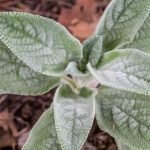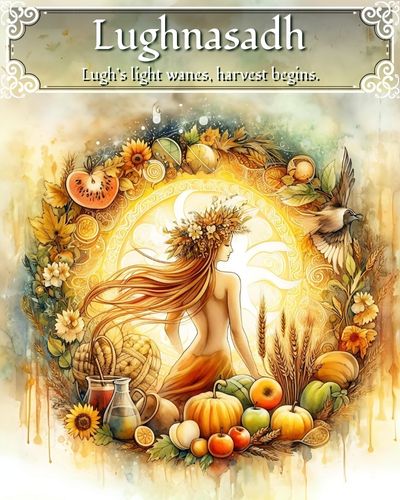
Approx. Reading time: About 11 Minutes

Introduction
Autumn Home Remedies – Tonics
As the seasons transition and nature showcases its vibrant colors, autumn brings an abundance of herbs, plants, and flowers that can be transformed into revitalizing tonics. Tonics are potent herbal preparations that aim to restore and invigorate the body, promoting overall wellness and vitality. By utilizing the offerings of autumn foraging, we can create homemade tonics that harness the healing power of nature during this transformative season.
In this series, we’ll go over steam treatment, elixirs, teas, tinctures, broths, herbal glycerites, aroma therapy, and tonics. There are a lot of home remedies and nearly endless possibilities of methods. The eight selected for this series are some of the most common practices. All these covered home remedies are perfect for Autumn Season applications.
In this article, we will explore the art of crafting tonics using autumn herbs, plants, and flowers, providing practical methods to incorporate them into our self-care routines. Prepare to embrace the rejuvenating energy of autumn and discover the power of herbal tonics.

Tonics
As the days grow shorter and the air becomes crisp, autumn offers us a bounty of earthy and warming herbs to nourish our bodies. One effective way to harness the healing power of autumn herbs is through the creation of soothing tonics. These herbal elixirs are designed to promote overall wellness, enhance immunity, and support the body’s natural functions. In this article, we will explore the art of crafting tonics using autumn herbs, highlighting their medicinal benefits and providing step-by-step instructions on how to prepare these comforting remedies in the comfort of your own home.
History
Tonics are liquid herbal preparations that are taken internally to support the health and vitality of the body. They are usually made with water, alcohol, vinegar, or glycerin as the base, and infused with various herbs that have nourishing, stimulating, or balancing properties. Tonics have a long history of use in home remedies and folk medicine, as well as in wicca and other forms of witchcraft.
The origin of tonics can be traced back to ancient times, when people used plants to treat various diseases and enhance their well-being. One of the most famous tonics in history is quinine, a bitter substance extracted from the bark of the cinchona tree. Quinine was discovered by the indigenous people of South America as a remedy for malaria and other fevers. It was later introduced to Europe by Spanish explorers and missionaries in the 17th century1. Quinine was also mixed with carbonated water to create tonic water, a popular drink that was patented by Erasmus Bond in 18582.
The herbal traditions of wicca and witchcraft are filled with magical uses of herbs. We use herbs for both healing and magical purposes, often following recipes that have been passed down for generations. Tonics can help us connect with the natural energies of the earth and the seasons, as well as with our deities and spirit guides.
Autumn Foraging for Energizing Ingredients
Autumn is a season of transition, when the leaves change color and fall, the harvest is gathered, and the days grow shorter and colder. It is also a time when many witches prepare tonics to strengthen their health, vitality, and connection to the natural and spiritual realms. Tonics are herbal concoctions that are brewed, steeped, or infused to extract the essence and benefits of various plants. They can be taken internally or applied externally, depending on the purpose and ingredients.
Autumn offers a rich assortment of herbs, plants, and flowers that can be foraged and incorporated into tonics to revitalize our body and spirit. Consider incorporating these ingredients into your autumn tonic preparations:
- Ginseng: Known for its adaptogenic properties, ginseng root helps enhance vitality, improve stamina, and support the body’s resilience during periods of stress or fatigue. Ginseng is a rare and valuable herb that grows in the wild in deciduous forests of North America and Asia. It prefers moist, well-drained soil and partial shade. Ginseng can be identified by its compound leaves with five leaflets, its red berries, and its forked root. Ginseng is usually harvested in the fall, when the root is fully developed and the berries are ripe. However, harvesting wild ginseng is regulated or prohibited in many areas, so you should check the local laws and obtain a permit before you go foraging. You should also respect the sustainability of the plant and only harvest mature roots (at least five years old) and leave some seeds for future growth.
- Nettle: This nutrient-dense herb is rich in vitamins, minerals, and antioxidants. Nettle leaf tonic can help nourish the body, support immune function, and promote healthy hair and skin. Nettle is a common and nutritious herb that grows in many parts of the world. It thrives in rich, moist soil and sunny or partly shaded areas. Nettle can be identified by its opposite, serrated leaves, its tiny green flowers, and its stinging hairs. Nettle can be harvested throughout the year, but the best time is in spring or early fall, when the leaves are young and tender. You should wear gloves and long sleeves to avoid getting stung, and use scissors or a knife to cut the stems.
- Ashwagandha: With its rejuvenating and calming properties, ashwagandha root is an excellent addition to autumn tonics. It helps reduce stress, support adrenal health, and promote overall well-being. Ashwagandha is a perennial shrub that grows in dry and sunny regions of India and South Asia. It belongs to the same family as tomatoes and peppers, and has green, fuzzy leaves, small, yellow flowers, and red berries. Ashwagandha can be identified by its distinctive smell, which is similar to horse sweat. Ashwagandha is usually harvested in the fall, when the root is fully grown and the berries are ripe. You should dig up the whole plant and cut off the root, which is the part used for medicinal purposes. You should also wash and dry the root before using it.
- Holy Basil: Also known as Tulsi, holy basil is an adaptogenic herb that supports the body’s stress response. It is revered for its ability to calm the mind, uplift the spirit, and enhance mental clarity. Holy basil is an annual or perennial herb that grows in tropical and subtropical regions of the world. It is related to the common basil, but has a stronger aroma and flavor. Holy basil can be identified by its oval, toothed leaves, its purple stems, and its spikes of white or purple flowers. Holy basil can be harvested throughout the year, but the best time is in summer or early fall, when the plant is in full bloom. You should cut the stems and leaves with scissors or a knife, and avoid damaging the roots.
- Mugwort: This herb is associated with the moon, dreams, divination, and psychic abilities. It can help witches to communicate with their ancestors, access their intuition, and enhance their visions. This herb is a common weed that grows in disturbed areas, such as roadsides, fields, gardens, and waste places. It has a distinctive aroma that is similar to sage or wormwood. It has green, fuzzy leaves that are lobed and toothed, and small, yellowish flowers that grow in clusters. Mugwort can be harvested throughout the year, but the best time is in late summer or early fall, before it flowers.
- Cinnamon: This spice is associated with the sun, fire, protection, prosperity, and love. It can help witches to ward off negativity, attract abundance, and increase their passion. This spice is derived from the inner bark of several species of trees in the genus Cinnamomum, which are native to Asia. Cinnamon is not easy to forage in the wild, unless you live in a tropical or subtropical region where these trees grow. However, you can grow your own cinnamon tree in a pot or a greenhouse, and harvest the bark when the tree is about two years old. You can peel off the bark, dry it, and grind it into powder, or use it as whole sticks.
- Bay leaves: These leaves are associated with Apollo, wisdom, success, and manifestation. They can help witches to achieve their goals, improve their skills, and create their reality. These leaves are from the bay laurel tree (Laurus nobilis), which is native to the Mediterranean region. Bay laurel is an evergreen tree that can grow up to 60 feet tall, but can also be pruned into a shrub or a hedge. It has glossy, dark green leaves that are oval and pointed, and small, yellow flowers that produce black berries. Bay leaves can be harvested at any time of the year, but the best time is in spring or summer, when the leaves are young and tender. You can use fresh or dried leaves for various purposes.
- Rose hips: These fruits are associated with Venus, beauty, healing, and happiness. They can help witches to nourish their skin, boost their immunity, and uplift their mood. These fruits are from the rose plant (Rosa spp.), which is a woody, perennial flowering shrub in the rose family. There are over 300 species of rose, and most of them produce edible rose hips. Rose hips begin to form after the pollination of flowers in the spring, and ripen in late summer or fall, turning from green to orange or red. The best time to harvest rose hips is after the first frost, when they become soft and sweet.
- Horehound: This herb is associated with protection, healing, and exorcism. It can help witches to ward off evil spirits, cure coughs and colds, and cleanse their space. This herb is from the horehound plant (Marrubium vulgare), which is a perennial plant in the mint family. Horehound is native to Europe, Asia, and Africa, but is now naturalized in many parts of the world. Horehound has square, hairy stems, wrinkled, gray-green leaves, and small, white flowers that grow in whorls. Horehound can be harvested throughout the year, but the best time is in summer, when the plant is in full bloom. You can use the leaves, stems, and flowers for various purposes.
- Dandelion: This herb is associated with Jupiter, air, wishes, and divination. It can help witches to manifest their desires, enhance their psychic abilities, and connect with the spirit world. This herb is from the dandelion plant (Taraxacum officinale), which is a perennial plant in the aster family. Dandelion is native to Eurasia, but is now widespread and considered a weed in many parts of the world. Dandelion has a taproot, a rosette of toothed, green leaves, and bright yellow flowers that turn into fluffy seed heads. Dandelion can be harvested throughout the year, but the best time is in spring or early summer, when the leaves are young and tender, and the flowers are fresh.
- Elecampane: This herb is associated with Mercury, earth, protection, and love. It can help witches to ward off negativity, attract a lover, and heal respiratory ailments. This herb is from the elecampane plant (Inula helenium), which is a perennial plant in the aster family. Elecampane is native to Europe and Asia, but is now cultivated and naturalized in many parts of the world. Elecampane has a thick, woody root, large, hairy leaves, and yellow flowers that resemble sunflowers. Elecampane can be harvested in late summer or fall, when the root is fully developed and the flowers are fading.
- Hibiscus: This herb is associated with Venus, water, love, and lust. It can help witches to attract romance, enhance their sexuality, and stimulate their creativity. This herb is from the hibiscus plant (Hibiscus sabdariffa), which is an annual or perennial plant in the mallow family. Hibiscus is native to Africa, but is now cultivated and naturalized in many tropical and subtropical regions of the world. Hibiscus has green, lobed leaves, and large, showy flowers that range in color from red to pink, white, or yellow. Hibiscus can be harvested throughout the year, but the best time is in summer or fall, when the flowers are fully open.
These are just some of the many autumn tonic ingredients that witches can use to enhance their magic and well-being. By using these ingredients, witches can align themselves with the energy of the season and prepare for the coming winter.
Crafting Autumn Tonics
Recipe
Recipe – Autumn Tonics
Ingredients
- Fresh or dried herbs, plants, or flowers of your choice Ginseng, Nettle, Ashwagandha, or Holy Basil
- Filtered water
- Optional sweeteners like honey or maple syrup
Instructions
- Gather your chosen autumn botanicals and rinse them gently to remove any dirt or impurities. If using fresh herbs, gently bruise the leaves to release their aromatic oils.
- In a saucepan, combine the botanicals with filtered water. Use a ratio of approximately 1 tablespoon of dried herbs or 2 tablespoons of fresh herbs per 8 ounces of water.
- Bring the mixture to a gentle simmer over medium-low heat. Cover the saucepan and let it simmer for 20-30 minutes to allow the flavors and beneficial compounds to infuse into the water.
- After simmering, remove the saucepan from heat and let the mixture cool slightly.
- Strain the liquid into a clean container, separating the herbs or flowers from the infused liquid.
- If desired, add a touch of natural sweetener like honey or maple syrup to enhance the taste of the tonic. Stir well to ensure it is fully incorporated.
- Your autumn tonic is now ready to be enjoyed! Sip it slowly, savoring the flavors and allowing the revitalizing properties to invigorate your body and spirit.
Notes
Customizing Autumn Tonics for Specific Needs
Tailor your autumn tonics to address specific health concerns or to enhance overall well-being. Consider the following additions:- Immune-Boosting Tonic: Combine ginseng, elderberries, and echinacea for a tonic that strengthens the immune system and helps ward off seasonal ailments.
- Stress-Relief Tonic: Blend ashwagandha, holy basil, and lemon balm for a tonic that promotes relaxation, reduces stress, and supports adrenal health during the busy autumn season.
- Nourishing Vitality Tonic: Mix nettle, dandelion root, and ginger for a tonic that nourishes the body, supports detoxification, and boosts energy levels.
Proudly brought to you by
The Equinox Apothecary

© The Equinox Apothecary 2024 – Permission is granted to copy and reproduce this Recipe with attribution
Incorporating Autumn Tonics into Daily Life
Autumn tonics are herbal elixirs that can help you embrace the magic and beauty of the season. Here are some ways to enjoy autumn tonics and support your overall well-being:
- Make autumn tonics a part of your daily self-care routine. Sip them in the morning or throughout the day to nourish your body, restore energy, and uplift your spirit. Autumn tonics can also help you connect with the natural rhythms of the season, balance your emotions, and enhance your intuition.
- Use autumn tonics as flavorful additions to your favorite autumn-inspired recipes, such as soups, stews, or salad dressings. Infuse them with the vitality and therapeutic benefits of the season. Autumn tonics can also help you celebrate the harvest, honor the ancestors, and share your abundance with others.
- Transform your tonics into herbal infusions by steeping them with additional herbs or teas for added flavor and medicinal benefits. You can also add honey, lemon, ginger, or other ingredients to customize your tonics according to your preferences and needs. Autumn infusions can also help you create a cozy and relaxing atmosphere, warm your body and soul, and prepare for the coming winter.
Conclusion
Autumn tonics provide a refreshing and invigorating way to embrace the energy and vitality of the season. By foraging for herbs, plants, and flowers and crafting homemade tonics, we can tap into the healing power of nature and enhance our well-being during this transformative time. Explore the revitalizing properties of ginseng, nettle, ashwagandha, and holy basil as you create your own custom blends. Embrace the restorative energy of autumn and allow these tonics to nourish your body, uplift your spirit, and support your overall health.
Incorporate autumn tonics into your daily routine to experience their revitalizing effects. Sip them slowly, savoring the flavors and allowing their therapeutic properties to infuse your being. Customize your tonics to address specific health concerns or to enhance your overall well-being. Embrace the wisdom of the earth, celebrate the abundance of the season, and let the healing power of autumn tonics invigorate your body and spirit.
Remember to consult with a qualified herbalist or healthcare professional if you have specific health conditions or concerns. Enjoy the process of crafting your own autumn tonics and let their revitalizing essence become a part of your daily wellness journey. Embrace the transformative power of nature’s harvest and delight in the rejuvenating effects of these homemade remedies. Cheers to vibrant health and well-being during the autumn season!













